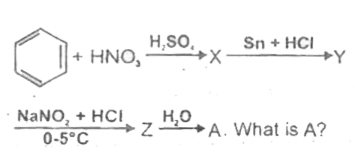What is laevorotatory
Fructose
Glucose
Maltose
Sucrose.
The correct Answer is:A
Step-by-Step Solution:
1. Understanding Optical Activity:
- Optical activity refers to the ability of a substance to rotate the plane of polarized light. This property is commonly observed in chiral compounds, which are molecules that cannot be superimposed on their mirror images.
2. Classification of Sugars:
- Sugars, particularly monosaccharides and disaccharides, can be classified based on their optical activity. They are categorized into two types: D-sugars (dextrorotatory) and L-sugars (levorotatory).
3. Dextrorotatory vs. Levorotatory:
- Dextrorotatory (D-sugars) are those that rotate polarized light to the right (clockwise).
- Levorotatory (L-sugars) are those that rotate polarized light to the left (counterclockwise).
4. Example of Levorotatory Sugar:
- An example of a levorotatory sugar is fructose. This sugar is known to rotate polarized light to the left, hence it is classified as an L-sugar.
5. Comparison with Other Sugars:
- Other sugars mentioned, such as glucose, maltose, and sucrose, are classified as D-sugars because they rotate polarized light to the right.
6. Historical Context:
- Fructose was historically referred to as "libulose" because of its levorotatory nature, indicating its ability to rotate light to the left.
Final Answer:
Levorotatory refers to substances, particularly sugars, that rotate the plane of polarized light to the left. An example of a levorotatory sugar is fructose.
---
- Optical activity refers to the ability of a substance to rotate the plane of polarized light. This property is commonly observed in chiral compounds, which are molecules that cannot be superimposed on their mirror images.
- Sugars, particularly monosaccharides and disaccharides, can be classified based on their optical activity. They are categorized into two types: D-sugars (dextrorotatory) and L-sugars (levorotatory).
- Dextrorotatory (D-sugars) are those that rotate polarized light to the right (clockwise).
- Levorotatory (L-sugars) are those that rotate polarized light to the left (counterclockwise).
- An example of a levorotatory sugar is fructose. This sugar is known to rotate polarized light to the left, hence it is classified as an L-sugar.
- Other sugars mentioned, such as glucose, maltose, and sucrose, are classified as D-sugars because they rotate polarized light to the right.
- Fructose was historically referred to as "libulose" because of its levorotatory nature, indicating its ability to rotate light to the left.
Levorotatory refers to substances, particularly sugars, that rotate the plane of polarized light to the left. An example of a levorotatory sugar is fructose.
Topper's Solved these Questions
- MOLECULES OF THE CELLBOOK - DINESH PUBLICATION ENGLISHCHAPTER - MOLECULES OF THE CELLEXERCISE - CYG
43 Videos
- MOLECULES OF THE CELLBOOK - DINESH PUBLICATION ENGLISHCHAPTER - MOLECULES OF THE CELLEXERCISE - CYG
43 Videos
- MICROBES IN HUMAN WELFAREBOOK - DINESH PUBLICATION ENGLISHCHAPTER - MICROBES IN HUMAN WELFAREEXERCISE - Brain Teasers-VIII
60 Videos
- MOLLUSCABOOK - DINESH PUBLICATION ENGLISHCHAPTER - MOLLUSCAEXERCISE - CYG
10 Videos
Similar Questions
Knowledge Check
Assertion : D-glucose is dextrorotatory whereas L-glucose is laevorotatory.
Reason : D-compounds are always dextro and L-compounds are always laevorotatoryAIf both assertion and reason are true and reason is the correct explanation of assertion.BIf both assertion and reason are true but reason is not the correct explanation of assertion.CIf assertion is true but reason is false.DIf both assertion and reason are false.
What is (A)?A B
B C
C D
D



 . What is A?
. What is A?